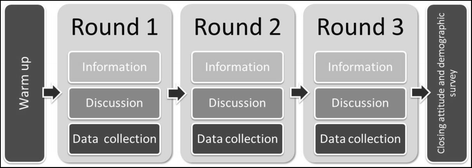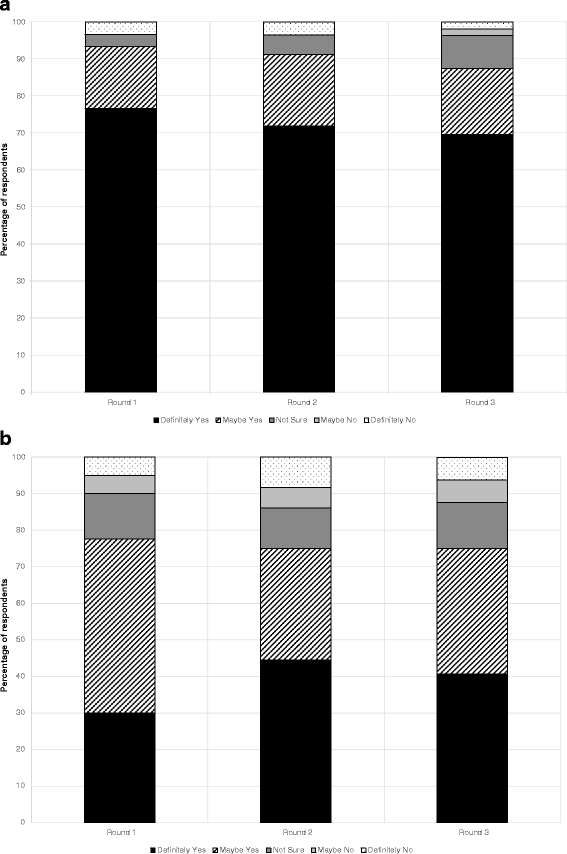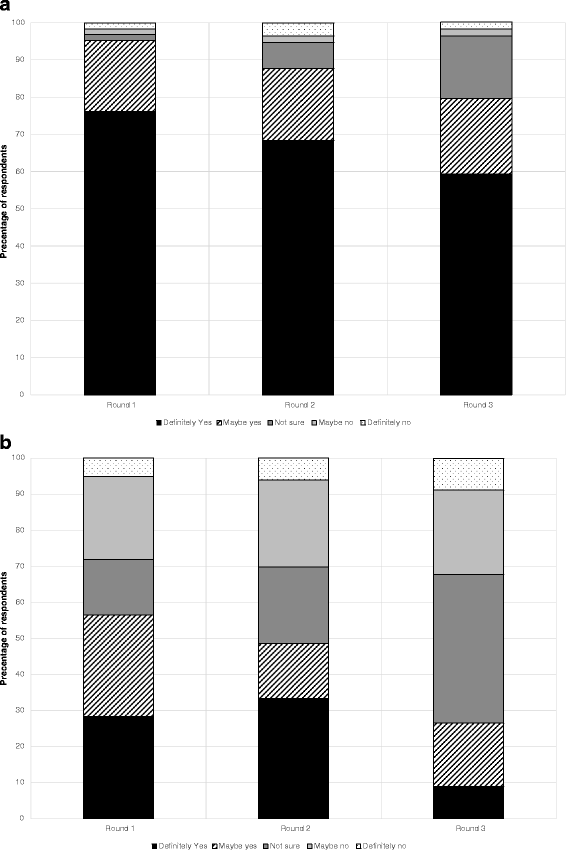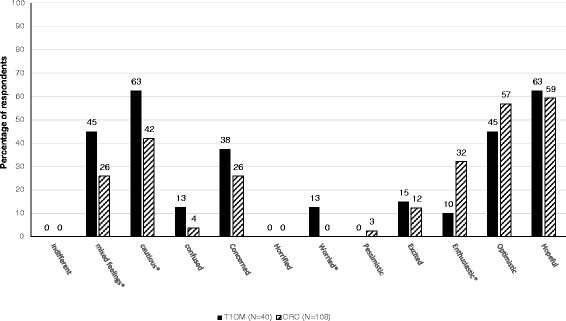Attitudes to incorporating genomic risk assessments into population screening programs: the importance of purpose, context and deliberation
- PMID: 27215612
- PMCID: PMC4878078
- DOI: 10.1186/s12920-016-0186-5
Attitudes to incorporating genomic risk assessments into population screening programs: the importance of purpose, context and deliberation
Abstract
Background: The use of an overall risk assessment based on genomic information is consistent with precision medicine. Despite the enthusiasm, there is a need for public engagement on the appropriate use of such emerging technologies in order to frame meaningful evaluations of utility, including the practical implementation and acceptability issues that might emerge. Doing so requires the involvement of the end users of these services, including patients, and sections of the public who are the target group for population based screening. In the present study we sought to explore public attitudes to the potential integration of personal genomic profiling within existing population screening programs; and to explore the evolution of these attitudes as part of a deliberative process.
Methods: We conducted a mixed methods study presented in the format of a deliberative workshop. Participants were drawn from communities in Ottawa, Ontario (ON) and St John's, Newfoundland and Labrador (NL), Canada. Individuals were approached to take part in a workshop on the incorporation of genomic risk profiling for either colorectal cancer screening (CRC), or newborn screening for type 1 diabetes mellitus (T1DM).
Results: A total of N = 148 (N = 65 ON, N = 83 NL) participants provided data for analysis. Participants in both groups were supportive of public funding for genomic risk profiling, although participants in the T1DM groups expressed more guarded positive attitudes than participants in the CRC groups. These views were stable throughout the workshop (CRC, p = 0.15, T1DM, p =0.39). Participants were less positive about individual testing, with a significant decrease in support over the course of the workshop (CRC p = 0.02, T1DM, p = 0.003). Common concerns related to access to test results by third parties.
Conclusions: The findings of this study suggest that members of the target populations for potential genomic profiling tests (designed for screening or risk prediction purposes) can engage in meaningful deliberation about their general acceptability and personal utility. Evaluations of whether a test would be personally useful may depend on the experience of the participants in personal health decision making, the purpose of the test, and the availability of interventions to reduce disease risk.
Figures




Similar articles
-
Public attitudes towards genomic risk profiling as a component of routine population screening.Genome. 2013 Oct;56(10):626-33. doi: 10.1139/gen-2013-0070. Epub 2013 Aug 31. Genome. 2013. PMID: 24237344 Free PMC article.
-
Factors associated with intentions to adhere to colorectal cancer screening follow-up exams.BMC Public Health. 2006 Nov 6;6:272. doi: 10.1186/1471-2458-6-272. BMC Public Health. 2006. PMID: 17083746 Free PMC article.
-
A Genomic Test for Colorectal Cancer Risk: Is This Acceptable and Feasible in Primary Care?Public Health Genomics. 2020;23(3-4):110-121. doi: 10.1159/000508963. Epub 2020 Jul 20. Public Health Genomics. 2020. PMID: 32688362
-
How can polygenic inheritance be used in population screening for common diseases?Genet Med. 2013 Jun;15(6):437-43. doi: 10.1038/gim.2012.182. Epub 2013 Feb 14. Genet Med. 2013. PMID: 23412608 Free PMC article. Review.
-
Closing the gap between knowledge and clinical application: challenges for genomic translation.PLoS Genet. 2015 Feb 26;11(2):e1004978. doi: 10.1371/journal.pgen.1004978. eCollection 2015. PLoS Genet. 2015. PMID: 25719903 Free PMC article. Review.
Cited by
-
Public perception of predictive cancer genetic testing and research in Oregon.J Genet Couns. 2020 Apr;29(2):259-281. doi: 10.1002/jgc4.1262. Epub 2020 Mar 27. J Genet Couns. 2020. PMID: 32220044 Free PMC article.
-
Implementation considerations for offering personal genomic risk information to the public: a qualitative study.BMC Public Health. 2020 Jun 29;20(1):1028. doi: 10.1186/s12889-020-09143-0. BMC Public Health. 2020. PMID: 32600382 Free PMC article.
-
The implementation of pharmacogenomics into UK general practice: a qualitative study exploring barriers, challenges and opportunities.J Community Genet. 2020 Jul;11(3):269-277. doi: 10.1007/s12687-020-00468-2. Epub 2020 May 28. J Community Genet. 2020. PMID: 32468238 Free PMC article.
-
Barriers and Facilitators for Population Genetic Screening in Healthy Populations: A Systematic Review.Front Genet. 2022 Jul 4;13:865384. doi: 10.3389/fgene.2022.865384. eCollection 2022. Front Genet. 2022. PMID: 35860476 Free PMC article.
-
Evaluating the Integration of Genomics into Cancer Screening Programmes: Challenges and Opportunities.Curr Genet Med Rep. 2019;7(2):63-74. doi: 10.1007/s40142-019-00162-x. Epub 2019 May 18. Curr Genet Med Rep. 2019. PMID: 32117599 Free PMC article. Review.
References
Publication types
MeSH terms
Grants and funding
LinkOut - more resources
Full Text Sources
Other Literature Sources
Medical
Miscellaneous

